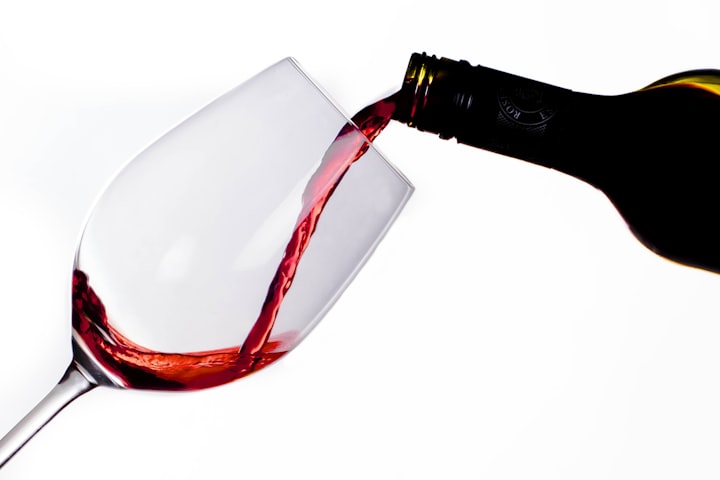Religion and Wine:
The pair that has transpired within time.

As one of the original alcoholic drinks of contemporary human civilization, wine has imparted itself into practically every significant religion of the world. Since the birth of time, the doctrines of Europe and the Middle East gradually embodied this “nectar of the gods“ into their observances, declaring its fame and continuity throughout generations and millennia of individual growth. During great courses of time, the recipe of wine was secured as a mystery of religious faiths and influential established families of Sumerian and Egyptian authorities (Fuller, 1996). When wine eventually reached Ancient Greece and Rome, it created an original set of gods and rites focused on this compelling alcoholic drink (Fuller, 1996). As those ancient civilizations collapsed, wine worked to withstand the dark and middle ages under the preservation of Jews and Christians, instructed by various wine displays in the Bible (Fuller, 1996).
The early rituals that introduced wine into their observances were Sumerians and Egyptians. Within a thousand-year reign, they honored wine by offering respect to several gods for whom they thought were answerable for wine formulation (Fuller, 1996). Sumerians adored their “Lady of the Wine“ Geshtin, also established as Geshtinanna, Gestinann, and Egyptians had Renenutet, the divinity of harvest and wine (Fuller, 1996). Many remaining tombs of Egyptian pharaohs had detailed hydrographical reports of wine production, its practice in their way of life and religion (Fuller, 1996). Farther, several wine elements were applied as a separate of the Egyptian embalming. Afterlife ceremonies such as pots of red wine were discovered under the pyramids in Pharaohs' tombs (Fuller, 1996).
As distant as 1000 BC, Greeks constructed wine from the Egyptians and established the religion of Dionysus. Dionysus was an Olympian god who handed over the mystery of winemaking to humanity (Fuller, 1996). Dionysus's Festival was held over entire Greece and its provinces, and every age elaborate three-day festivities were offered to celebrate their wine god (Fuller, 1996). During this festival, people carried masks that indicated many faces of Dionysus, and wine was taken by both rich and poor. Romans seized Dionysus' folklore and rebranded him as Bacchus - a lighthearted and cheerful god who yearned to drink a lot (Fuller, 1996).
The most notorious practice of wine in the church was by Christians, who, from the initial years of their belief, established the tradition of consuming Communion wine, which symbolically portrays the blood of Jesus Christ (Fuller, 1996). Corresponding to Christianity's theories, wine consumption is approved in moderation, and many utterances of wine in the Holy Bible strengthened their principles. The most memorable use of wine in the Bible derives from the Gospel version of the Last Supper, which depicts how Jesus received bread and wine with his disciples and required them to commemorate him by it (Fuller, 1996). Judaism approves wine in several of their observances and festivities such as Shabbat, Pesach, sacrificial service.
How did Religion affect the Prohibition of alcohol?
There were many civil and developmental reasons for Prohibition, like considerations about financial capability, defending women and children from alcoholic men, and assuring the community’s Protestant culture from Irish Catholic settlers (Buren, 1871).
Though, legislators protected that the “Medicine of Life to the Nations” would be secured. The acceptance of the Volstead Act that implemented Prohibition in the United States from 1920 until its revocation in 1933 was politically conceivable solely by making arrangements for the pursued manufacture of wine for both Christian and Jewish audiences (Buren, 1871).
Alcohol has not consistently been favored with particular theological associations in the United States (Buren, 1871). During the 1830s, a movement emerged among Protestant congregations that looked at drinking as a sin. This developed into a key pulling out of the temperance act, in which Protestant societies merged with women’s rights parties and anti-slavery advocates to hinder the usage of alcohol (Buren, 1871). Ultimately, it developed into a movement to ban wine and alcohol practice altogether, and their resolutions introduced the enactment of the 18th Amendment in 1919. During Prohibition, which endured until 1933, the manufacture, market, and transport of alcohol were outlawed. The distribution and practice of wine for religious functions were supported. To present sacred or kosher wine, wineries required a permit and satisfied particular qualifications. The proprietor was answerable for establishing that the wine was utilized for observances and various religious purposes entirely. It is extensively regarded that religion supported the business of wineries during this period.
References
Buren, J. V. (1871). The scuppernong grape, its history and mode of cultivation: with a short treatise on the manufacture of wine from it. Goodwyn & Co.
Fuller, R. (1996). Religion and Wine: A Cultural History of Wine Drinking in the United States. University of Tennessee Press.
About the Creator
Dr. Reanna Waugh PhD
Dr. Reanna Waugh PhD Founder and CEO of Waugh's Holistic Wellness Center, Student, second PhD in Clinical Psychology, Life Coach at WHWC currently in Gladstone, MI (USA) with her husband, Kyle Waugh, a retired Veteran of the Air Force.






Comments
There are no comments for this story
Be the first to respond and start the conversation.